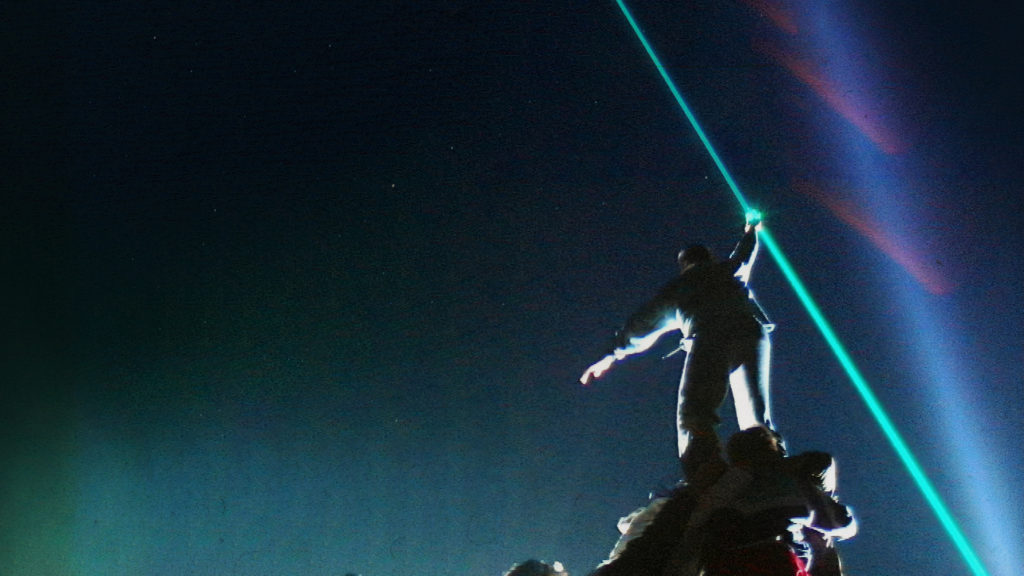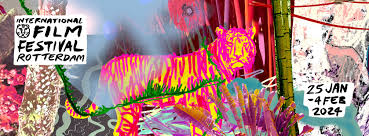Review: The Light (2023) by
Rotterdam International Film Festival
Harbour programme

How many reasons can you find to obliterate a project by an artist? That well was obviously bottomless in the case of a very publicly cancelled Elle-Mie Ejdrup Hansen, whose ‘Peace Sculpture’ was tarnished by the public and media alike back in 1995. The horrendous witch-hunt ended her career for over two decades, and now finally back on the scene, she looks back at one of the biggest scandals in Denmark together with her former collaborators, art curators, friends and the former Minister of Culture Jytte Hilden whose political career also suffered from it, in Alexander Lind’s sober, analytical documentary “The Light”.
Answering the question why the light installation project designed to celebrate the 50th anniversary of country’s liberation from the Nazi occupation on 4 May 1995 angered the surviving members of resistence, isn’t simple. One of the interpretations that the film presents is that mixing a beam of light with German bunkers that formed a so called Atlantic Wall in WWII, awoke unpleasant memories of who had build it, and it wasn’t the Germans.
The rage of surviving members of resistance was so big that all forces were mobilized to put the realization of Peace Sculpture to halt. From today’s perspective, the actions taken to discredit Elle-Mie Ejdrup Hansen and the proportions of the media war against her look extreme, but if there is a parallel that we can draw to today’s reality, it was just one conspiracy theory going very south, influencing masses and leading to public scorn.
At the time of project’s planning, Ejdrup Hansen was fighting a battle with another kind of enemy: an aggressive, life-threatining desease that inspired her to think about light as a phenomena that both a newborn and a dying person see, marking the initiation and the end of one’s life. She spent a significant amount of time exploring the west coast of Denmark, taking snapshots of the 6000 bunkers left by the occupiers meant to defend their conquered territory from a potential attack by the enemy during the WWII.

What is still considered as Denmark’s largest artwork consisted of a laser light line that streched along the Jytland west coast, but it also included a significant ammount of exhibitions and sculptures (56) commissioned from the world leading artists of the time: Bill Woodrow’s “Bunker/ Mule”, Geoffrey Hendricks’ “When will this bunker become a part of the sky/ the earth?”, Micha Ullman’s “Observation”Jörg Immendorf’s “The monkey as an artist”, Nobuho Nagasawa’s “Emergency Womb” with 500 eggs made by local school children, Giampaolo Di Cocco’s “Can’t I/ Alma Divisa”, Alfio Bonnano’s “Relics”, Sjoerd Buisman’s “Senecio”, Anthony Gormley’s “Human Shelter”, Hansen’s “The Line”, Dmitri Prigov’s “The Last Supper”, among others. In public talks, there was no mention of them, and the anger was aimed at the offensive and insulting ‘pop circus’ (according to one member of the resistance) that cost the state 15 million DKK.
One of the challenges for the Danish citizens was to get the full scope of the project. To see the complete work one would have to travel from Skagen to German border, and a sabotage that took place at two cities made masses dissapointed, believing that the whole thing was a scam that cost them tax-payers money.
Lind is not taking sides. He lets people and images speak for themselves. While filming Ejdrup Hansen amidst her artistic re-enactment of events from 1995 in form of a large scale installation, he wraps the screen in chiaroscuro, placing the artist before art to let her introduce it in her own manner. One of the sculptures, “Files Cabinet” (2020) consists of the archives from Peace Sculpture. Complete communication with municipalities the art team worked with back in time, but also with people involved in the project is filed in it. The length of the artpiece is in 1:100 000 ratio to the Danish west coast (from Skagen to Sild).
As the constituent part of the exhibition is “Anatomy of Shame”, a video installation in which the artist lists all things that made her ashamed when the scandal broke out. Some of them are shame of having to pick up Micha Ullman’s sculpture at the dump, that she was called a Nazi and that her light beam was compared to Adolf Speer’s Cathedral of Light in Nuremberg. A couple of other things Elle-Mie Ejdrup Hansen feels ashamed about are her ambition, that they were spoken down to because they were young women and ashamed to experience the men in power watching out for themselves, something that can lead to the interpretation number two – that she was biased due to her gender. The list is painfully long and relatable, because as her close collaborator and PR manager Heidi Meier Bach would put in the film she became a pariah that no one in the art world dared to work with her.
There are many interesting angles of this story, thoroughly analysed by historians, art connosseurs and people involved in “Peace Sculpture”, but also by its hard-core oponents. Their voices are admittedly coming from the past, but they are not less relevant to understand what happened.
“The Light” is a documentary that isn’t aimed at one kind of audience. It speaks about the universal problem of misscommunication and fear of the unknown. It also shows how easy it is to draw conclusions from the fragment of information, and that good people don’t necessarily always do the right thing.
Screenings in IFFR’s Harbour programme section mark the film’s international premiere, and it is a highly recommendable watch.
Original Title: Lyset
Country: Denmark
Year: 2023
Runtime: 70′
Produced by: GotFat Productions
Producer: Emil Johnsen
Executive Producer: Thor Hampus Bank
With support from: Danish Film Institute, The West Danish Film Fund
Cast: Elle-Mie Ejdrup Hansen, Michael Thouber, Jytte Hilden, Leif & Gitte Kath, Cecilie Nelson and others
Editors: Denniz Göl Bertelsen & Anders Obbekjaer
Cinematographers: Troels Rasmus Jensen, Laurits Flensted-Jensen, Peter Sorensen
Sound Design & Mix: Andreas Sandborg
Composer: Asbjorn derdau
Colourist: Jian Zhi Zhang
Gaffer: Mikkel Sigsgaard, Mikkel Hougaard, Emil Lund
Steadicam: Jacob Gosch
















